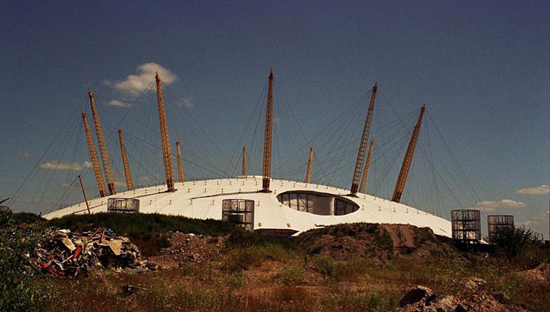
10 Construction Projects That Were Huge Wastes of Time and Money
By Clint Carter, Toptenz, 1 January 2015.
By Clint Carter, Toptenz, 1 January 2015.
In ancient Thailand white elephants were given as a sardonic gift, because while they were certainly grand they had little use and required a great deal of care. In modern times the term has been translated to objects which are impressive, but whose cost far exceeds its usefulness. Every town has at least one, but these are the world’s worst offenders.
10. Russky Bridge
Nikita Khrushchev once referred to Vladivostok as “Russia’s San Francisco.” So what better way to make Vladivostok even more like San Francisco than by building it an iconic bridge like the Golden Gate? When Vladivostok was chosen in 2007 as the site for the 2012 Asia Pacific Economic Conference, Vladimir Putin had his excuse to spend a billion dollars on what would be the world’s longest cable bridge. It would connect mainland Vladivostok to Russky Island, where the conference would be held.
However, the Golden Gate Bridge, and pretty much every other bridge in the world, actually connects population centres. Russky Island has 5000 residents. The bridge was designed to handle 50,000 cars per day. It did make things convenient for the two day conference, but since then the bridge has predictably had very light traffic and the hope of turning the island into a major tourist attraction has developed slowly, to put it generously.
9. Detroit People Mover
Detroit once had a population of 1.8 million and was America’s fourth largest city. It had an impressive skyline and vibrant downtown scene. Then a city that was built by the automobile industry was ironically devastated by a system of freeways providing easy access to the suburbs. Today the city’s population is around 700,000, and it recently had the dubious distinction of being the largest city to ever declare bankruptcy.
This didn’t happen overnight. Recognizing the trend, city leaders in the mid ’80s decided to build a funky transit system around downtown to connect major businesses while protecting patrons from Detroit’s notoriously awful weather. Thus the “Detroit People Mover” was conceived. It’s an elevated 2.9 mile one way tram around downtown that connects all major sites.
Just one problem - it’s a loop that doesn’t connect to anything else. Detroit has no metro rail system like other large cities, which would allow commuters to ride into town and then board the People Mover to their specific destination. Riders on Detroit’s public bus system can’t transfer on board, but rather need to buy a second ticket from an independent system. It is a very reasonable 75 cents per ride, but cost analysis shows that each rider costs the cash-strapped city three dollars.
Even before it opened in 1987, many realized it would never come close to its projected use of 68,000 riders per day. They were right - 6000 per day is pretty much the normal expectancy. One person summed it up best as a “horizontal elevator to nowhere.”
8. Ryugyong Hotel
In 1987, construction began in Pyongyang, North Korea on a 105 story building scheduled to be the world’s tallest hotel. Let that sink in for a moment. The world’s tallest hotel, with around 3000 rooms, in a country that allows very few visitors.
It was far and away the most elaborate project in the history of the totalitarian state, and predictably there were some problems. The construction was plagued with delays and cost overruns until 1992 when, shortly after the collapse of the Soviet Union and the end of their financial support, the project was halted. By this point it was estimated the project had cost us$750 million, or about 2% of North Korea’s GDP. All they had to show for it was an oddly shaped concrete shell with a cone and rusting crane on top.
That’s how it would stay for sixteen years before an Egyptian telecommunications firm stepped in and offered to complete the project. Again, let that sink in. A country which allows very limited use of cell phones and Internet partnered with a telecommunications firm. Fortunately, they were able to put a glass facade on the building and it’s now rather aesthetically pleasing compared to the concrete shell it used to be. However, there’s no timeline for when it will be ready for guests, and many speculate that the inside is completely bare.
7. Mirabel International Airport
In the late ’60s, Montreal was ready to make the jump from Canada’s cultural centre to global city. It hosted the highly successful Expo 67 World’s Fair, was awarded Major League Baseball’s first franchise outside the United States, and was given the honour of hosting the 1976 Summer Olympics. Aviation wise, it also has the distinction of being the closest major North American city to most of the cities of Europe. In an era when commercial aircraft had a more limited range it was often necessary for flights originating from anywhere other than the east coast to stop for fuel before crossing the Atlantic. Government leaders decided that the fairly large and conveniently located Dorval (now Pierre Elliott Trudeau) International Airport just wouldn’t do for such an important city. So the decision was made to build a 221 square mile (at the time the biggest in the world) airport 34 miles northwest of downtown.
When Mirabel opened in 1975 the decision was made to keep Dorval open for domestic flights while using Mirabel for international flights. This meant anyone transferring from a domestic to international flight had to take an hour long bus ride between airports. But by the time the airport opened planes could travel much farther, and airlines figured out that passengers would prefer not to have to take an hour long bus ride as part of their journey to and from Europe. So they simply started flying to other destinations for their transferring customers instead.
In 1997 the decision was made to return international flights to Dorval. This was the final nail in Mirabel’s coffin, as the conveniently located Dorval could now provide all the same services. By 2004 commercial flights ceased to use Mirabel and it became a little used cargo airport. Its main use today is as a race track and occasional movie set, where it’s most recognizable as the home of all the zombies in Warm Bodies. Does anyone else see the irony?
6. Athens Olympic Facilities
In 1997 Athens was awarded the 2004 Summer Olympics. This was one year after the Olympic Committee became very unhappy with Atlanta for relying heavily on corporate sponsorship to fund the 1996 games, and for primarily using temporary venues or modest facilities. So they told the small country of Greece to build things bigger and grander, and to use primarily public funding for it.
The facilities were spectacular for the two weeks the Olympics were held, but there was virtually no plan for what to do with most of them once the games were complete. Currently the only facility getting any consistent use is the main stadium, which is used by the local soccer club and for various other events. Most of the other facilities are getting no use whatsoever. For instance, a beach volleyball stadium was built for the games despite Athens sitting on an actual beach. Likewise, the baseball stadium is getting no use in a country where the national baseball team had to be made up entirely of Americans with Greek heritage.
Just to make matters worse for the small country, these were the first Summer Olympics held after September 11. Needless to say, security was a bit of a concern. It’s estimated the games cost Greece upwards of 5% of their entire GDP. It’s no surprise that the country was plunged into economic chaos just a few years after the games. Other countries are beginning to see the futility of hosting the Olympics, and only two cities are bidding for the “honour” of hosting the 2022 Winter Games.
5. Lambert-St. Louis Airport Expansion
By the mid ’90s St. Louis’ airport had become the eighth busiest in the nation, mostly due to being the primary domestic hub for TWA, a brand name which means something to old people. However, in terms of physical size it was one of the smallest airports in the country. Its parallel runways, which are pretty much a necessity for any hub, were too close together to meet the FAA’s standards for bad weather landings and take-offs. Anyone who has ever been to St. Louis knows that bad weather is a frequent occurrence, and the resulting delays caused chaos to the TWA system.
The simplest solution would’ve been to build a new airport. St. Louis is located right along the Mississippi River, and not far across the river is plenty of open space to build a suitable airport. However, the land across the river is also known as Illinois. Missouri officials weren’t willing to put their precious airport in another state, even though, say, Cincinnati has done just fine having their airport in neighbouring Kentucky.
So expansion was deemed the only option, even though the airport was completely surrounded by suburbs and therefore a large swath of residential and commercial space would have to be demolished. The powers that be decided one of the suburbs was just going to have to be sacrificed to allow for the expansion. Here is the (presumed) transcript from the meeting:
Participant: So, which suburb shall we destroy?All Other Participants: Bridgeton!Maniacal laughing, twirling of moustaches and lighting of cigars with hundred dollar bills.
Bridgeton was a working class suburb of around 20,000 people. The plan to build the FAA compliant parallel runway went right through the middle of the town and required the demolition of 2000 homes, four schools and six churches. In 1998 Operation Screw Bridgeton began. Three years later the project was going according to plan, but then TWA was bought out by American Airlines. Since American already had very large hubs in Chicago and Dallas they had no need for another one right between them. By 2006, when the project was completed, the number of flights had decreased by nearly 80% from its peak before the start of the project. There was no longer a need for a second runway, which in addition to destroying Bridgeton had cost US$1.1 billion.
To add insult to injury, the new runway is much farther from the terminal. While that may not seem like a big deal, large aircraft require a great deal of fuel. Taxiing just a little farther is a lot more expensive. So the new runway is only used on rare occasions when parallel landings and take-offs are needed, which represent about 5% of flights at the airport.
4. Montreal Olympic Stadium
Although Montreal’s 1976 Summer Olympics were fairly successful, like Athens they were a financial disaster for the city. This was largely due to the enormous security cost they didn’t anticipate but became necessary after the 1972 Munich Massacre.
Unlike Athens, Montreal had specific plans for all of its venues after the games. The centrepiece of the games was Olympic Stadium. It was given the nickname “the big O,” both for hosting the Olympics and for its donut shape. After the games it would become the home of the Expos, and would host many other events as well.
Like other stadiums of the time, it was designed as a multi-use facility. Unlike other stadiums at the time, it was designed to have a retractable roof. Most impressively, it would have the world’s highest inclined tower acting as a crane to support the roof. While the stadium was completed in time for the Olympics, the tower and roof were not. In fact, they weren’t completed until 11 years after the Olympics. Once finally completed the retractable roof was like a giant curtain, prone to tearing in any wind over 25 mph. After several years of frustration it was decided to just make the roof a permanent fixture. Unfortunately, it wasn’t a very good roof. Since it was designed to be pulled off the stadium like a blanket, it had lots of folds and tears and leaked badly with the slightest precipitation. It wasn’t very strong either, so it was deemed unsafe if supporting too much snow.
After several years of dealing with this the decision was made to replace the roof, and the new one…ended up with many of the same problems. Fed up with all these issues, the Expos began demanding a new facility and other groups decided it was just too risky to schedule events there. Since the city was already strapped paying off the debts from the Olympics and the aforementioned Mirabel Airport, a new stadium just wasn’t in the cards. So in 2005 the Expos left for Washington D.C., and their old stadium currently has no primary tenant. In 2006 it was paid off for a final cost of US$1.6 billion, making it the most expensive stadium ever built at the time. Locals have since changed its nickname to “The Big Owe.”
3. Palace of Parliament
In 1984 Nicolae Ceaucescu, the ruthless dictator of Romania, decided that poverty stricken Romanians didn’t really need healthcare, education, or food. No, what they needed was a gigantic palace, the largest in all of Europe, to house government offices, and of course Ceaucescu himself.
In 1989 Ceaucescu was deposed and executed, but his massive building remained. The new government decided it would be suitable for all of their needs as well, because hey, no sense in turning down a free parliament building. Except Romania isn’t very big. Even though the building houses almost every key government office less than a third of it is occupied. That’s a lot of wasted space, and presumably a lot of unamused Romanian taxpayers.
2. Millennium Dome (O2 Arena)
You may remember that in the late ’90s everyone was excited about the upcoming new millennium, unless they were certain that Y2K would end the world. But once New Year’s Day had passed (and Y2K didn’t happen) it ceased to be interesting.
British officials, however, were so confident that millennium fever would last the entire year they built an impressive US$1.3 billion dome along the Thames which would house an exhibition expected to draw at least 12 million visitors. It only got six million, mostly because those who did go found it to be very disappointing, little more than a gigantic advertisement for various big name sponsors.
So not only did the exhibit underwhelm, there was no plan in place for what to do with the dome once the calendar turned to 2001. It sat empty for a few years before mobile phone provider O2 took it over, and it now serves mainly as a concert venue. But despite being a dome in a city that loves sports and has notoriously awful weather, it doesn’t have a permanent tenant.
1. New South China Mall
China has undergone an enormous transformation from a tightly controlled communist economy to a free market system. Chinese people have embraced consumerism and an opportunity to get goods from around the world. So in 2005 the largest shopping mall in the world opened in the city of Dongguan. It has space for over 2000 stores, a food court and amusement facilities. Since China’s economy was going global sections of the mall had different world themes, including a replica Venetian canal and Arc de Triomphe. And it’s never had more than a dozen stores open at a time. It was expecting around 100,000 visitors daily. It rarely sees more than 200. The store that gets the most visitors? McDonald’s.
Why has such an impressive facility in a consumer mad country had such a difficult time attracting customers? Remember that it’s in Dongguan. Have you heard of Dongguan? Exactly. Even though it’s a city of 10 million it’s located right between Guangzhou and Hong Kong, cities you have heard of it. Dongguan is essentially an endless series of drab apartment towers and factories. All those shoes and rubber ducks you buy are made somewhere, and that’s in places like Dongguan by low paid workers. People who don’t have money to spend at fancy shopping malls. It was also built on the outskirts of town with limited public transportation access. In a city of low paid workers the only way to get there is by car, and most residents don’t own one.
Despite being almost completely empty, the mall is kept impeccably neat and clean. It has a full time staff and is ready should consumers ever come by. But that seems unlikely, because developers adjusting to the new consumer economy forgot rule number one: location, location, location.
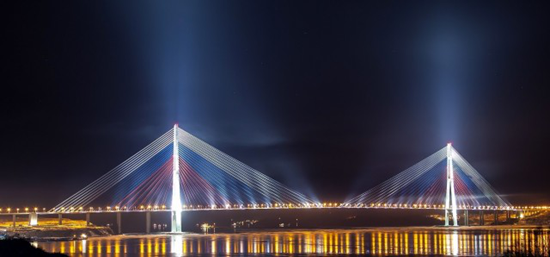
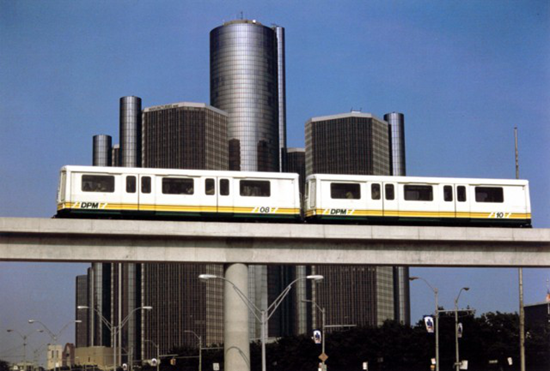
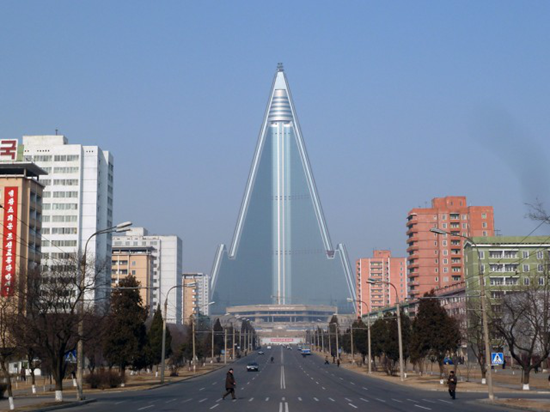

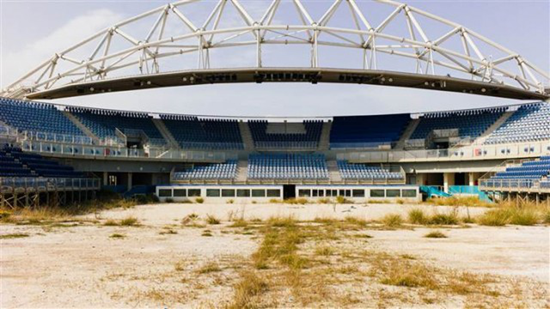


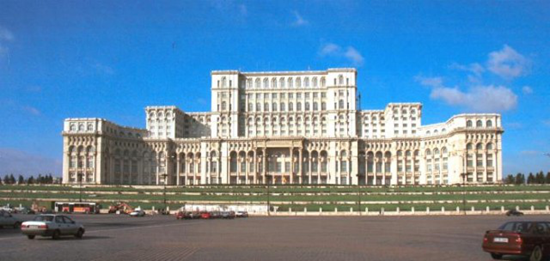
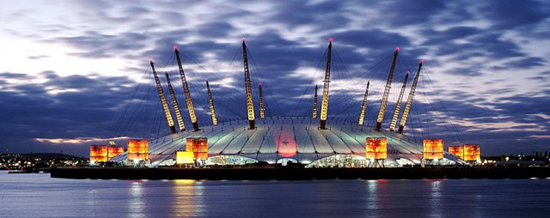
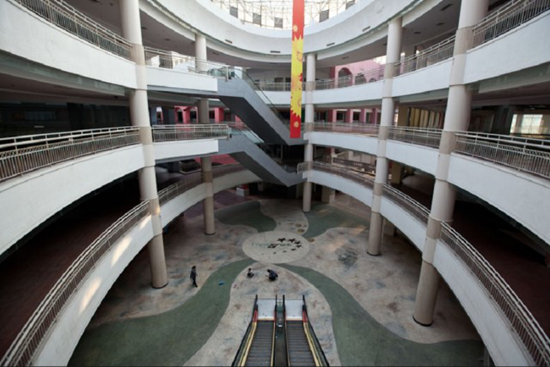
No comments:
Post a Comment
Please adhere to proper blog etiquette when posting your comments. This blog owner will exercise his absolution discretion in allowing or rejecting any comments that are deemed seditious, defamatory, libelous, racist, vulgar, insulting, and other remarks that exhibit similar characteristics. If you insist on using anonymous comments, please write your name or other IDs at the end of your message.